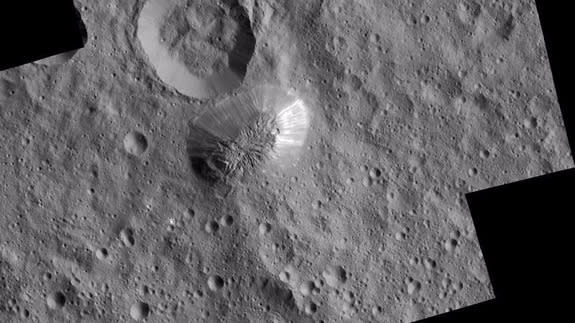Look at this weird mountain rising from the surface of the dwarf planet Ceres

In the year since NASA's Dawn spacecraft started orbiting the dwarf planet Ceres, the probe has made some surprising discoveries.
From the bright, reflective spots in some of the world's craters, to possible tectonic activity that shaped Ceres' geology, Dawn has seen a lot in a short period of time.
And the findings keep coming. Dawn recently got a closer look at a mysterious mountain rising from the surface of the dwarf planet.
SEE ALSO: Zoom above the dwarf planet Ceres in new NASA animation
The mountain, named Ahuna Mons, was first seen in February 2015, but because the spacecraft was so far away at that time, it just looked like a "bump," NASA said.

Image: NASA/JPL-Caltech/UCLA/MPS/DLR/IDA
Today, however, Dawn is orbiting Ceres from an altitude of 240 miles, allowing it to get a much closer look at Ahuna Mons. The mountain, it turns out, is no small bump.
It is, in fact, taller than California's Mount Whitney, at about 2.5 miles high on average, with its steepest side rising to about 3 miles, NASA added.
Scientists think of the mountain as a "dome with smooth, steep walls," according to NASA.
"No one expected a mountain on Ceres, especially one like Ahuna Mons," Chris Russell, Dawn's principal investigator, said in the statement. "We still do not have a satisfactory model to explain how it formed."
"We are hard at work on the mysteries the spacecraft has presented to us," said Carol Raymond, who works with Russell as Dawn's deputy principal investigator.
Dawn will continue to map Ceres until the end of its primary mission in June.

